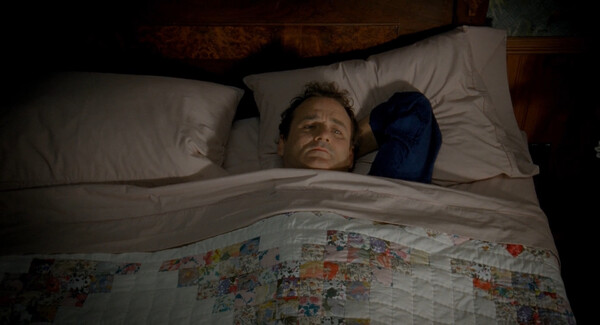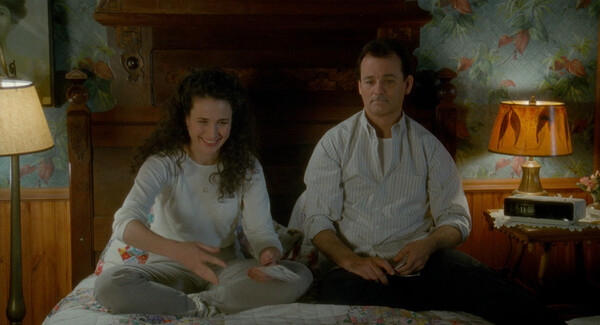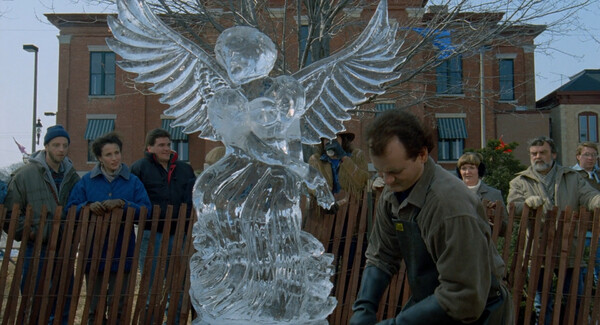Enlightenment through repetition in Groundhog Day
Introduction
Although the trope of endlessly repeating the same day has appeared in nearly every medium across the world, the most well-known example is undoubtedly Harold Ramis's 1993 romantic comedy film Groundhog Day. In the film, narcissistic weather reporter Phil Connors, played by Bill Murray, is stuck in a time loop, reliving Groundhog Day in Punxsutawney, Pennsylvania over and over again. Trapped in a town full of local "hicks" and coworkers he hates, Phil first turns to hedonism: stealing money from an armored car, eating a comically massive breakfast at the town diner, and seducing random women using his temporal omniscience. But he soon grows tired of this life and depressed by the endless repetition. He tries everything to escape, including elaborate suicides and a heist to kidnap the town's groundhog, but each morning he wakes up in the same room of the same bed and breakfast, doomed to relive the same day again and again.

Over the course of the film, Phil attempts to pursue a romantic relationship with his producer Rita (played by Andie MacDowell), but she rebuffs his shallow and manipulative advances. Rita sees through his pretend sincerity and rejects him: "I could never love someone like you, Phil, because you'll never love anyone but yourself." In the following montage we see that each repeated attempt ends the same way: with a slap.
Eventually, from this constant failure Phil reaches a new understanding of life. He dedicates his infinite time to self-improvement and helping others. He saves a kid falling out of a tree, nurses an old homeless man back to health, performs the Heimlich maneuver on the choking Buster Green, and over the course of one day manages to help pretty much everyone in town. Through these selfless acts he learns to appreciate life and love others, which turns out to be the solution to both of his problems. Rita is finally charmed by his new, genuine personality, and the next morning Phil wakes up and it's February 3—he has been miraculously freed from hell after attaining enlightenment.
This central theme of repetition is reminiscent of Friedrich Nietzsche's idea of "eternal recurrence," in which "the eternal hourglass of existence is turned over and over and you with it, a mere grain of dust."1 In this post, I examine how this repetition creates a uniquely internal quest for self-knowledge, as opposed to the traditional external quest to gain some object or conquer some foe.
False Sincerity
Phil Connors is an actor, a television personality who delivers weather forecasts with his "wickedly sarcastic sense of humor."2 Fakery and charade are his profession, a fact that is made clear from the first moment we see him. In this opening scene we watch him act out his weather report with mimed actions in front of a blank blue screen wall, pretending to interact with the simulated clouds projected on it for only him to see.

As David Lavery observes, "eternal recurrence enables Phil Connors to feign sincerity momentarily, enables him to pretend he cares about Rita's deepest values and beliefs—enables him to almost pass for a decent human being."2 At first he exploits the time loop to enhance his acting abilities, like in the scene where he learns the name of Nancy Taylor's high school English teacher, and uses it in the next loop to impersonate an old classmate.
But these tricks grant Phil only temporary pleasures—they don't help him fulfill his true desire. "Rita's ability to see through him returns Phil to square one... Sincerity as an art born of eternal recurrence must not exhibit 'a palpable design upon us.'"2 Phil's acting skills cannot bring him true happiness or save him from the karmic prison of Punxsutawney, and the realization of this plunges him into a suicidal depression. Rita's accusation that "you'll never love anyone but yourself" is countered with Phil's first real introspective line: "That's not true, I don't even like myself."
In order to find love and break free of the supernatural forces that force him to repeat the same day again and again, Phil must stop his false sincerity and break down the walls of sarcasm and ego he has built around himself and achieve self-realization.
Inversion of the Hero's Journey
In the words of Suzanne Daughton (1996), "What makes Groundhog Day significant among contemporary films is that to achieve his transformation, Connors must embark on what is traditionally a feminine rather than a masculine quest, journeying inward in order to encounter and submit to the power of the dark goddess, rather than outward in order to master and claim some object in the external world."3 This journey inward is reflected by the film's setting. Phil is confined in a physically small town, in a temporally small slice of time, with no real enemies to defeat or treasures to obtain. There is no danger either—Phil cannot die in Punxsutawney. The divine forces that want to teach Phil Connors a lesson make it very clear that the answer to his problems is not external, but rather within himself.
To escape from February 2, Phil cannot rely on the defenses he knows—the fakery he uses to clumsily court Rita or the brute force he uses to smash the alarm clock and kill the groundhog (both merely symbols of his imprisonment, not the cause). At the end of the second act he has an enlightening conversation with Rita where for the first time he speaks to her as a human being, not as a coworker he holds in contempt or merely a sexual goal to pursue.

This moment isn't enough to free Phil from Punxsutawney, but he knows what he has to do now. Following Rita's advice, he turns his knowledge towards helping people of the town and bettering himself. "He has shown sincere appreciation for Rita and the qualities he once ridiculed."3 The next scenes show a Phil dedicated to goodness for its own sake. He runs to catch a boy falling out of a tree, jokingly scolding him "what do you say? You little brat, you have never thanked me!" He knows the boy will wake up fine the next day regardless of his actions, but he still rushes to catch him anyway, unthanked and unadmired. He masters ice sculpting and playing the piano. At the Groundhog Day party Phil looks genuinely happy and fulfilled for the first time in the film. "He has found his purpose serving others, and has achieved a complete transformation of the self he despised."3
Enlightenment
By the end of the film the only thing that Phil has really conquered is his old self. In fact, "rather than resenting his trip to Punxsutawney each year, or even being understandably eager to leave after his forced stay, Connors has become so fond of the town and its beauty that he wants to remain."3 The introspection from being forced to repeat the same day gives him a real appreciation for life and a new, genuine sincerity.
It's no mistake that the only image of the divine we see in the film is Phil's ice sculpture of an angel near the end. Like this angel, Phil's truth and guidance come from within. Having journeyed within and returned with kindness, humility, and an appreciation for the ordinary days and people he experiences, Phil is finally permitted to return to the real world and the normal passage of time.

References
- Nietzsche, Friedrich Wilhelm. 1887. Die Fröhliche Wissenschaft. EW Fritzsch
- Lavery, David. 1999. "'Same-O, Same-O': Eternal Recurrence in Groundhog Day." Studies in Popular Culture 22 (1): 89–97. https://www.jstor.org/stable/23414580.
- Daughton, Suzanne M. 1996. "The Spiritual Power of Repetitive Form: Steps Toward Transcendence in Groundhog Day." Critical Studies in Mass Communication 13 (2): 138–54. https://doi.org/10.1080/15295039609366968.